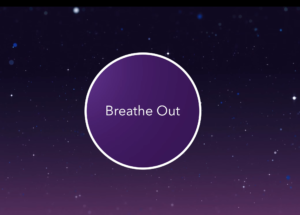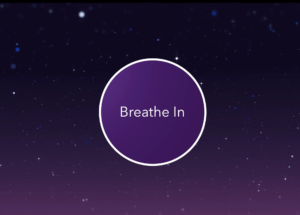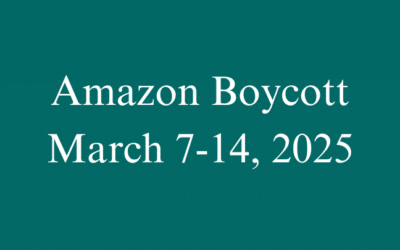My last post advocates breathing only through your nose all day, but it’s not easy. When I’m climbing the 46 stairs it takes to get to my apartment, I lose my breath and have to open my mouth. That’s how breathing works, right? Well, maybe not. If I had bigger lung capacity — which is the ability of my lungs to efficiently extract oxygen from the air I breathe— I could shoot up those stairs with a calm heart rate and relaxed breathing, but that kind of capacity takes work. Here’s one thing that has made it easier for me: Buteyko breathing exercises.
As James Nestor explains in his book, the idea is that during exertion your body only needs so much oxygen, but it also requires carbon dioxide. When we open our mouths and breathe heavily, we’re flooding our bodies with oxygen, but not with carbon dioxide. If we keep our mouths shut and breathe more slowly, our lungs get the balance of gases necessary for exertion. Not only will we perform with less huffing and puffing, we’ll actually perform better than with the huffing and puffing. I already knew Americans eat and drink badly. Nestor’s book has taught me we don’t even breathe well!
 Buteyko breathing exercises have been a big part of this learning process for me. I recommend this video that gives instruction as well as guides you in practicing this breathing. After you learn how to do it, you can try this video which is the one I use every morning.
Buteyko breathing exercises have been a big part of this learning process for me. I recommend this video that gives instruction as well as guides you in practicing this breathing. After you learn how to do it, you can try this video which is the one I use every morning.
In the 1950s, Dr. Konstantin Buteyko found that the best health and athletic performance came from from balancing oxygen and carbon dioxide levels in the body. The way to get that balance is to inhale and exhale slowly. He found that people suffering with asthma and other health problems breathed through their mouths and were constantly gasping for air. He figured out that they were getting too much oxygen. Counterintuitively, he told them to slow their breathing and restrict their oxygen intake. They got better.
He also found that people who were the healthiest inhaled and exhaled about ten times a minute, taking in much less air. They had lower resting pulse rates, fewer health problems, and the athletes performed better. Buteyko developed what he called Voluntary Elimination of Deep Breathing. How many breaths people took per minute was less important to Buteyko as long as they were breathing no more than about six liters per minute at rest. (This means the next time someone says, “Take a deep breath,” don’t take in a lot of air. Breathe low in your abdomen, imagining expanding only the bottom two ribs.)
 This is what I do now: when I climb my 46 stairs, as soon as I feel the need to open my mouth to get more air, I stop walking. I rest on a landing until my heart rate goes down, and then I keep going. I do the same thing when I’m walking down the street. If I start to lose my breath and want to open my mouth for more air, I either slow down or stop walking until I can keep breathing comfortably through my nose. This means that when I’m awake, I do not open my mouth to breathe.
This is what I do now: when I climb my 46 stairs, as soon as I feel the need to open my mouth to get more air, I stop walking. I rest on a landing until my heart rate goes down, and then I keep going. I do the same thing when I’m walking down the street. If I start to lose my breath and want to open my mouth for more air, I either slow down or stop walking until I can keep breathing comfortably through my nose. This means that when I’m awake, I do not open my mouth to breathe.
Part of the challenge is becoming comfortable with the feeling of not getting enough air. Sometimes I finish exhaling but need to hesitate before inhaling. This happens when I blow my nose or have shampoo running into my face in the shower. For a few seconds my lungs complain that they need the inhalation NOW, but they really don’t. I won’t pass out from not getting a fresh lungful of air every second. Just as, in the past, I’ve learned to tolerate food hunger, I’ve now learned to tolerate air hunger, and that improves lung capacity, too. We actually don’t need as much food as we think and we don’t need as much breathing as we think.
When I started this habit two months ago, I would sometimes go up my stairs very slowly so as not to need to stop and catch my breath. But a combination of doing the Buteyko exercise every day and breathing more consciously when I exert myself has increased my lung capacity. I can now climb all 46 stairs at a normal pace, without stopping, keeping my mouth closed, with no problem (as long as I’m not carrying 10 pounds of groceries or laundry). This is how I know my lungs have increased their ability to extract oxygen from the air I take in. (Only the nose, not the mouth, creates nitric oxide which increases circulation and helps get oxygen to cells. We absorb a higher rate of oxygen through our noses than through our mouths.)

Athletes who practice Buteyko breathing are able to outrun and outperform other athletes. I’m doing it so I can keep my mouth shut even when hustling down the street for a bus, or with bags of groceries. And the reason I want to do that is to train my mouth to stay shut 24/7, even when I’m asleep. Breathing through my nose all night helps me not wake up before morning. Staying asleep through the night and having more energy during the day is what all this breath-focus is about for this 57-year-old.
Does Mouth Taping Work? I’m running the experiment.
Close Your Mouth. And Chew: Link between chewing and snoring.




Regina, You are such a gifted writer. You create from your mind and your heart simultaneously. Some would say you are a breath of nose drawn fresh air. Thank you for your gift.
Thanks, Joe. I’m always on the lookout for spam comments, but your “nose drawn fresh air” saved this from looking suspicious. I appreciate you reading!
I love what you’re sharing about breathing! I’m learning from your posts. I’d heard of Buteyko breathing before but have not tried it. I’m going to give it a whirl. Thanks Regina!
You’re welcome. Let me know how it goes.
Incredibly interestin\g. I’d not heard of this at all. Thanks for explaining.
You’re welcome. I blog these kinds of things partly to maybe help others, and partly to document the information so I can find it later.